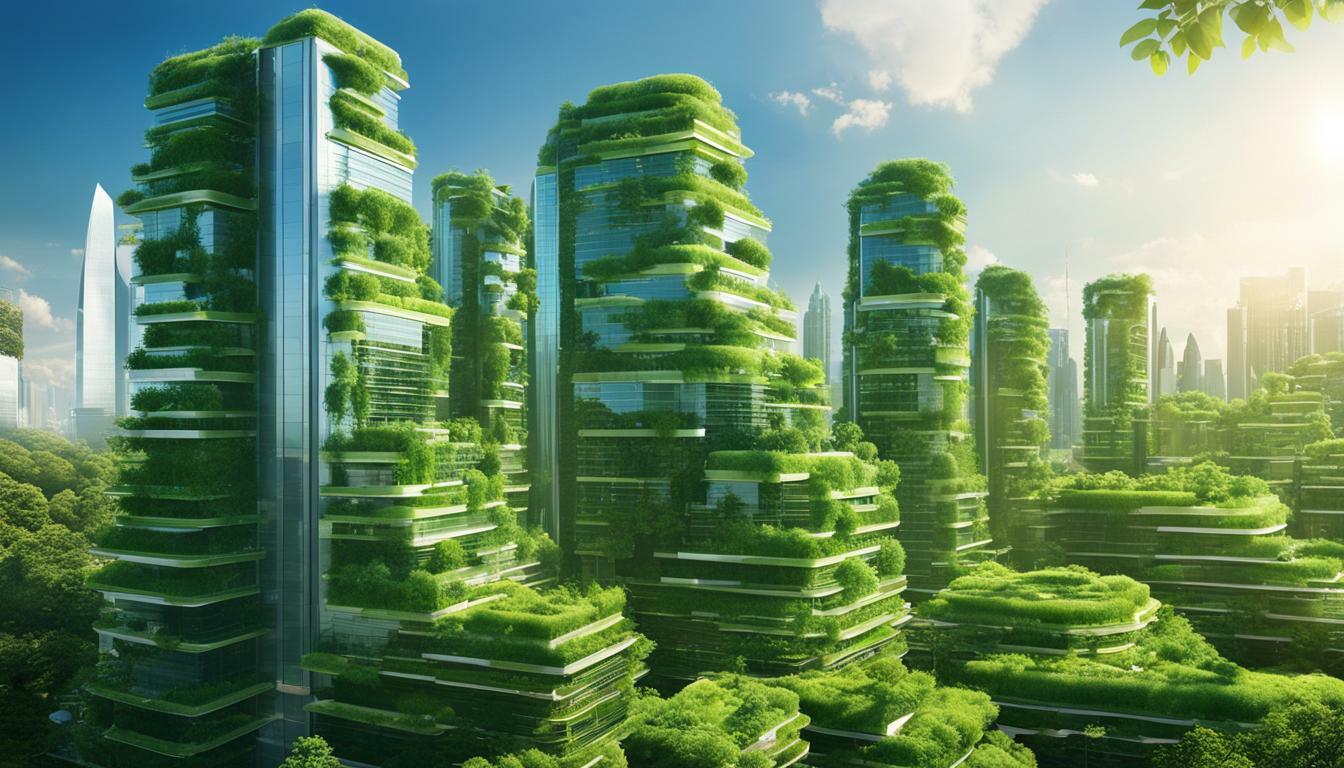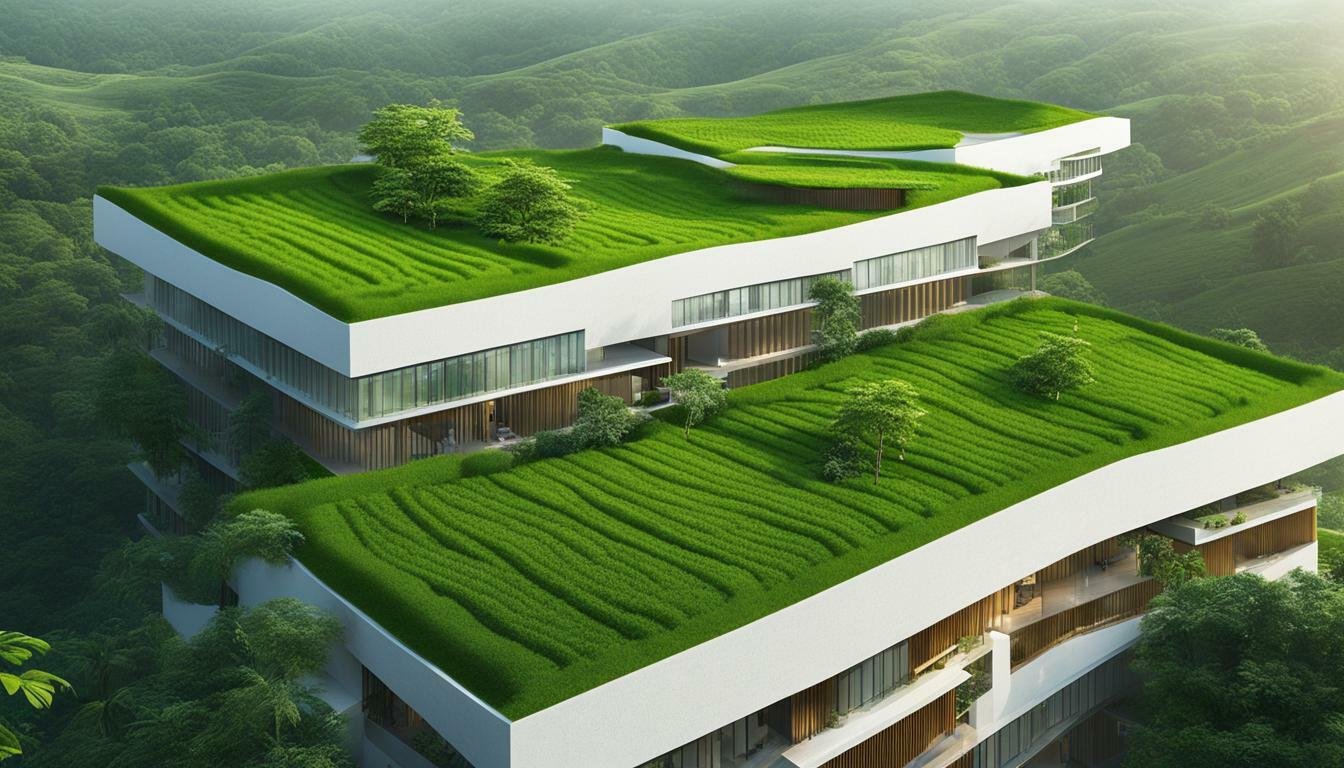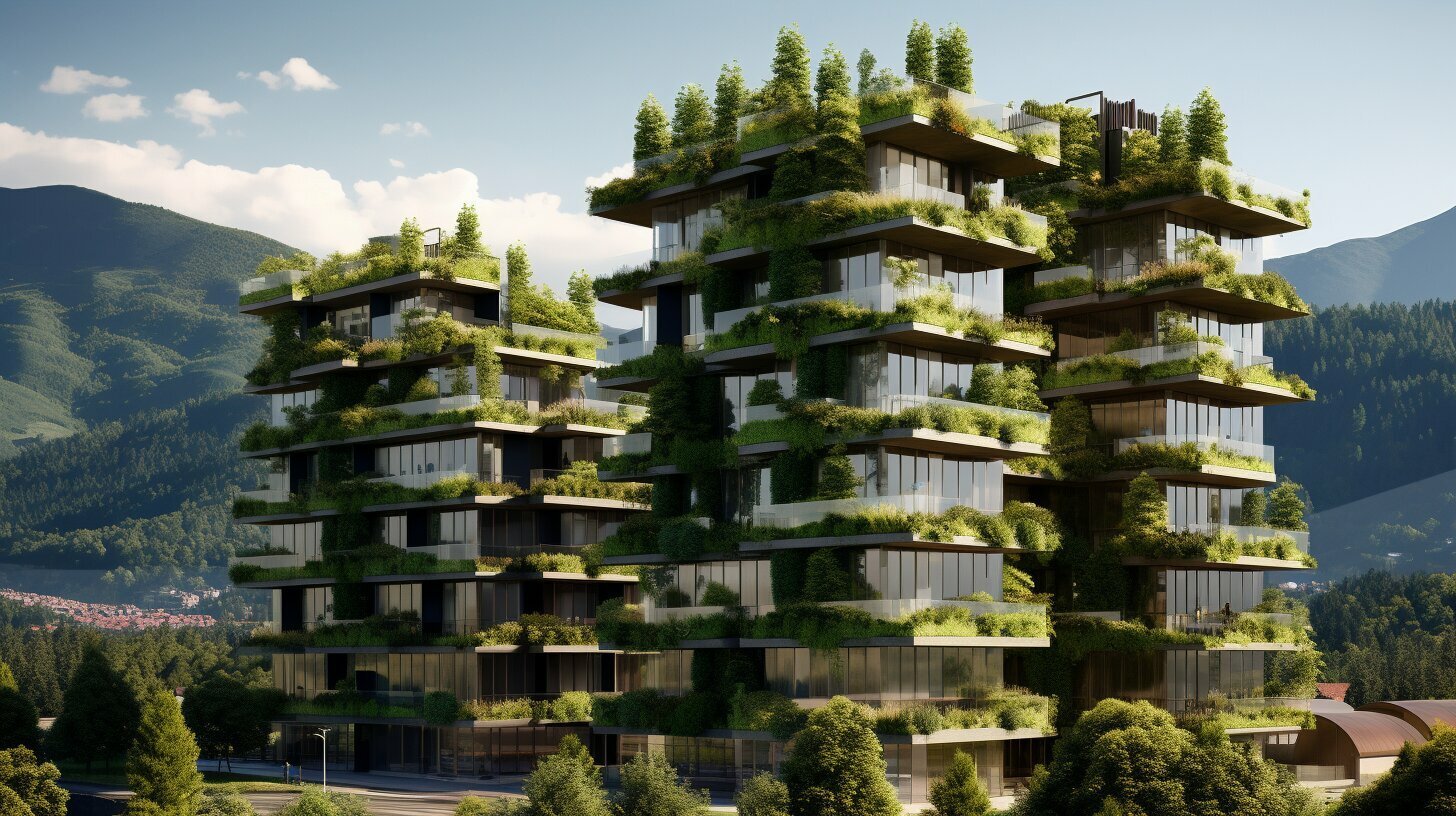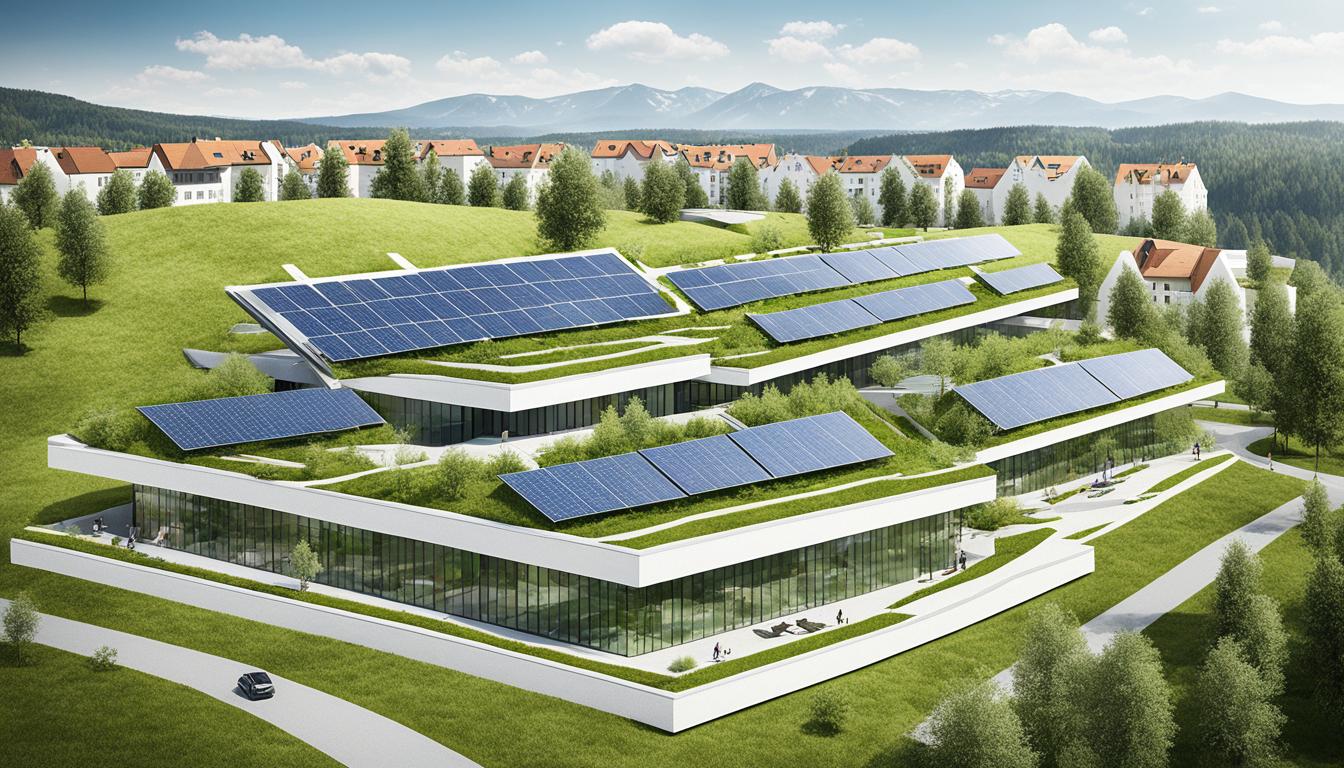Tracing the History of Green Building in Azerbaijan
Green building, also known as sustainable or eco-friendly construction, is a concept that aims to minimize the negative environmental impacts of the built environment while enhancing the health and well-being of the occupants. Over the years, Azerbaijan has been making significant strides in adopting green building practices and promoting sustainable development.
One of the earliest examples of sustainable architecture in the country is the Baku White City project, initiated in 2011. This urban regeneration project aimed to transform Baku into a more sustainable and environmentally friendly city.
Another significant milestone in Azerbaijan’s green building history is the establishment of the Azerbaijan Green Building Council (AzGBC) in 2013. The AzGBC is a non-profit organization that promotes and supports sustainable building practices in the country. It provides certification and training programs, as well as disseminates information on green building principles and technologies.
In 2015, Azerbaijan made a commitment to sustainable development by joining the United Nations’ 2030 Agenda for Sustainable Development. This move reflects the government’s dedication to incorporating sustainable practices, including green building, into its long-term development plans.
A notable green building project in Azerbaijan is the Port Baku Residential Towers, completed in 2016. These towers feature eco-friendly design elements, such as energy-efficient systems, water-saving technologies, and green spaces. The project has received recognition for its sustainability efforts within the construction industry.
Furthermore, the government of Azerbaijan has introduced various incentives and regulations to encourage sustainable building practices. In 2017, the State Agency for Housing Construction introduced a green mortgage program, offering preferential terms for energy-efficient housing projects.
The future of green building in Azerbaijan looks promising, with ongoing efforts to increase awareness and adoption of sustainable practices. The AzGBC continues to organize workshops, conferences, and exhibitions to educate professionals and the public about green building concepts and technologies.
Key Takeaways:
- The history of green building in Azerbaijan can be traced back to the Baku White City project and the establishment of the Azerbaijan Green Building Council (AzGBC).
- Azerbaijan has made a commitment to sustainable development by joining the United Nations’ 2030 Agenda for Sustainable Development.
- The government of Azerbaijan has introduced various incentives and regulations to encourage sustainable building practices, including a green mortgage program.
- The Port Baku Residential Towers serve as an example of sustainable architecture in Azerbaijan.
- The future of green building in Azerbaijan looks promising with ongoing efforts to increase awareness and adoption of sustainable practices.
The Emergence of Sustainable Construction in Azerbaijan
The history of green building in Azerbaijan can be traced back to the early 2000s when the country started to focus on sustainable construction. Since then, sustainable construction has gradually gained momentum in the country, with an increasing number of developers and investors embracing eco-friendly and energy-efficient building practices.
One of the key drivers for the emergence of sustainable construction in Azerbaijan is the growing awareness of the need to mitigate climate change and reduce carbon emissions. To encourage sustainable building practices, the government has implemented various initiatives and policies, including stricter regulations and incentives for green construction.
Furthermore, the demand for sustainable buildings has been on the rise in Azerbaijan. Developers and investors are recognizing the long-term benefits of constructing energy-efficient and environmentally friendly buildings. Not only do these buildings contribute to a healthier and more sustainable environment, but they also offer cost savings for owners and tenants in terms of energy consumption and maintenance.
Azerbaijan is also investing in renewable energy sources, such as solar and wind power, to meet the energy demands of sustainable buildings. The government has introduced subsidies and incentives to promote the use of clean energy in the construction sector.
In addition, sustainable construction practices in Azerbaijan encompass various aspects, including waste management, water conservation, and the use of recycled materials. Building designs are incorporating features like green roofs, efficient insulation, and natural lighting to maximize energy efficiency.
To support the growth of sustainable construction, the country has seen a rise in eco-certifications and rating systems for buildings. These certifications ensure that projects meet specific sustainability criteria and help drive the adoption of sustainable construction practices across the industry.
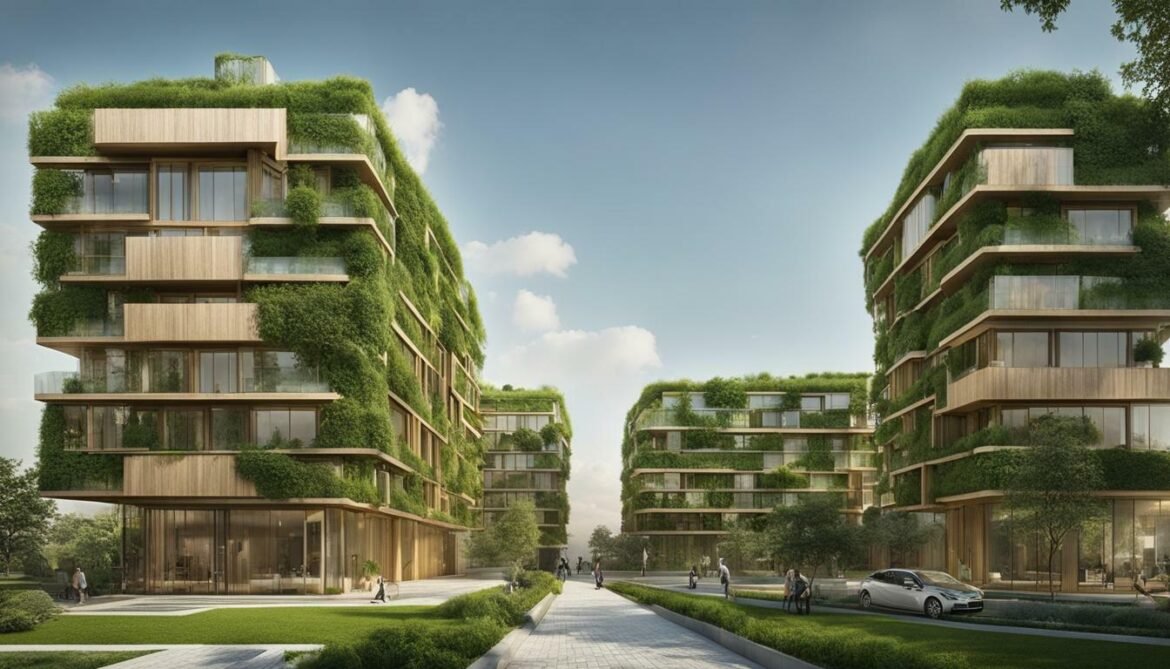
Overall, the emergence of sustainable construction in Azerbaijan is a response to global environmental challenges and a recognition of the economic and social benefits it brings. With continued government support and the commitment of the construction industry, Azerbaijan is well on its way towards a more sustainable built environment.
The Role of Azerbaijan Green Building Council (AGBC)
One of the key milestones in the journey of green building in Azerbaijan was the establishment of the Azerbaijan Green Building Council (AGBC) in 2009. This non-profit organization plays a vital role in promoting sustainable and environmentally friendly practices in the construction industry in Azerbaijan.
One of the primary roles of the AGBC is to provide education and training on green building practices. They organize workshops, seminars, and conferences to inform professionals and students in the construction industry about sustainable design, energy-efficient technologies, and green building materials. By offering these educational opportunities, the AGBC aims to increase the knowledge and skills of individuals working in the sector, ultimately leading to the implementation of green building techniques in projects across Azerbaijan.
Moreover, the AGBC serves as a platform for collaboration and networking within the construction industry. They bring together professionals, policymakers, and stakeholders to exchange ideas and best practices in sustainable construction. Through initiatives, such as industry forums and working groups, the AGBC facilitates dialogue and cooperation among different sectors of the industry, including architects, engineers, developers, and government agencies. This collaboration is crucial in finding innovative solutions and implementing sustainable practices in the building sector.
Another essential role of the AGBC is to promote green building certification and standards. They work closely with international organizations, such as the Green Building Council, to establish and adopt green building rating systems in Azerbaijan. The AGBC encourages developers and building owners to pursue certification, such as the Leadership in Energy and Environmental Design (LEED), to demonstrate their commitment to sustainability and gain recognition for their green projects. By promoting green building certifications, the AGBC aims to create a culture of sustainability within the construction industry and encourage the adoption of environmentally friendly practices.
In addition to education, collaboration, and certification advocacy, the AGBC also engages in research and advocacy efforts. They conduct studies and gather data on sustainable building practices and their impact on the environment and society. The AGBC uses this information to advocate for policies and regulations that support the adoption of green building practices at a national level. They work closely with government agencies and policymakers to promote sustainable development and contribute to the creation of a greener and more resilient built environment in Azerbaijan.
Overall, the Azerbaijan Green Building Council plays a crucial role in promoting sustainable practices in the construction industry in Azerbaijan. Through education, collaboration, certification advocacy, and research, the AGBC is working towards creating a more environmentally friendly and sustainable built environment for the country.

Showcasing Sustainable Design: The Baku White City Project
One of the earliest examples of green building in Azerbaijan is the Baku White City project, a large-scale mixed-use development project aimed at transforming Baku into a sustainable and livable city. As an innovative initiative that showcases sustainable design practices, the project incorporates a range of environmentally friendly features and technologies.
One key aspect of the Baku White City Project is its emphasis on preserving and reusing existing buildings. By repurposing old structures instead of demolishing them, the project highlights the importance of sustainable design and reducing waste. This approach contributes to the city’s heritage preservation and promotes a more environmentally friendly urban environment.
In addition to adaptive reuse, the Baku White City Project also prioritizes energy efficiency. Buildings within the development are designed to incorporate sustainable technologies such as solar panels, energy-efficient lighting, and smart building systems. These innovations help to reduce energy consumption, lower carbon emissions, and contribute to a more sustainable future.
Another significant aspect of the project is its commitment to green spaces and biodiversity. The development features extensive green areas, including parks, gardens and tree-lined boulevards. These green spaces not only provide recreational areas for residents but also contribute to the city’s overall sustainability by improving air quality, reducing heat island effect, and supporting biodiversity.
The Baku White City Project also places a strong emphasis on public transportation and accessibility. The development features a well-planned network of public transportation options, including metro stations, bus stops, and cycling lanes. By providing convenient and sustainable transport options, the project seeks to reduce reliance on private cars and promote a more sustainable and inclusive urban environment.
The Baku White City Project serves as a prime example of how sustainable design principles can be integrated into large-scale urban development. Through its focus on adaptive reuse, energy efficiency, green spaces, and accessible transportation, the project not only showcases sustainable design solutions but also contributes to the overall livability and resilience of Baku as a city.
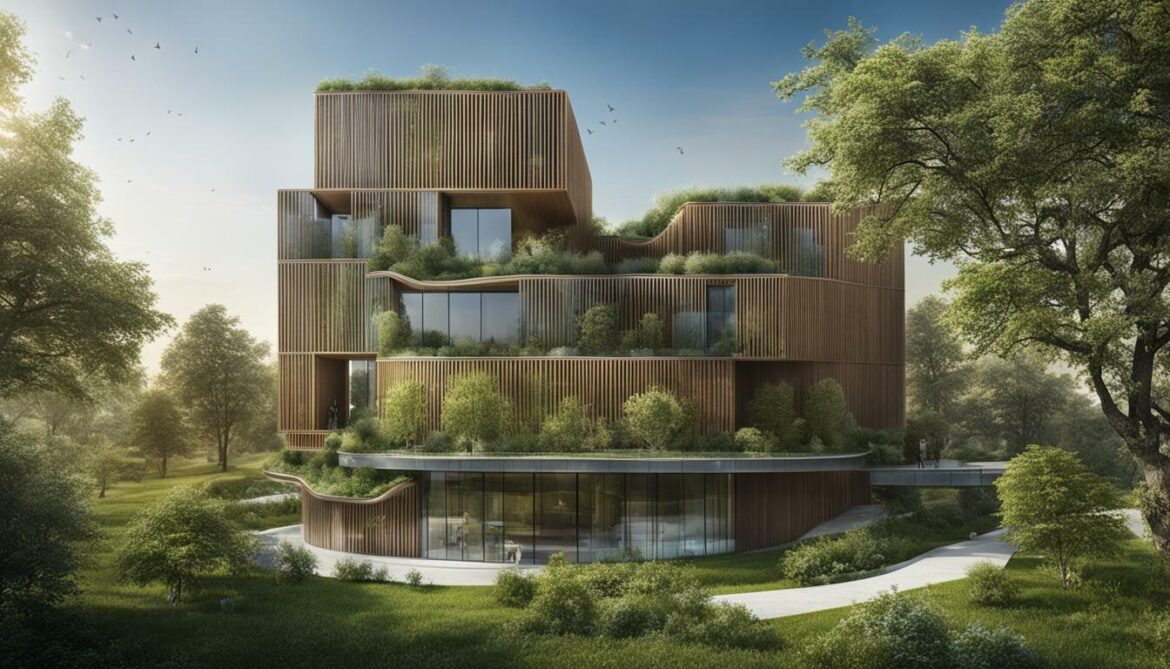
Certification and Recognition of Green Buildings in Azerbaijan
In recent years, Azerbaijan has witnessed a significant increase in the number of green buildings, with many projects achieving international certifications for their environmental performance and sustainable design features. Green building certification and recognition in Azerbaijan have become significant factors in achieving sustainable and environmentally friendly construction practices. Green buildings are structures that incorporate eco-friendly design, construction, operation, and maintenance methods.
In Azerbaijan, the process of certifying green buildings is overseen by the Azerbaijan Green Building Council (AGBC). The AGBC plays a vital role in promoting green building practices and awarding certifications to buildings that meet their sustainability criteria.
To obtain certification, a building project in Azerbaijan must comply with certain standards and criteria set by the AGBC. This includes aspects such as energy efficiency, water conservation, waste management, indoor air quality, and the use of sustainable materials. The AGBC also considers the impact of the building on the surrounding environment and community.
Once a building project meets the required criteria, it can apply for certification. The AGBC conducts a thorough review and assessment process to ensure that all the necessary sustainability requirements are met. If the building successfully complies with the standards, it is awarded a certification that recognizes its green credentials.
Certified green buildings in Azerbaijan receive recognition for their sustainability efforts. This recognition serves as a testament to the building owners’ commitment to sustainable development and environmentally responsible construction practices. Green building certifications are not only beneficial for the environment but also enhance the reputation and marketability of the building.
In addition to the AGBC certification, green buildings in Azerbaijan can also aspire to international recognition through well-known systems such as LEED (Leadership in Energy and Environmental Design) or BREEAM (Building Research Establishment Environmental Assessment Method). These internationally recognized certifications further validate the sustainable attributes of the building and attract global attention.
The trend towards green building practices in Azerbaijan is gaining momentum, with more and more developers embracing environmentally friendly design and construction methods. The certification and recognition of green buildings provide a clear framework for sustainable development and contribute to the overall goal of reducing the ecological footprint of the built environment in Azerbaijan.
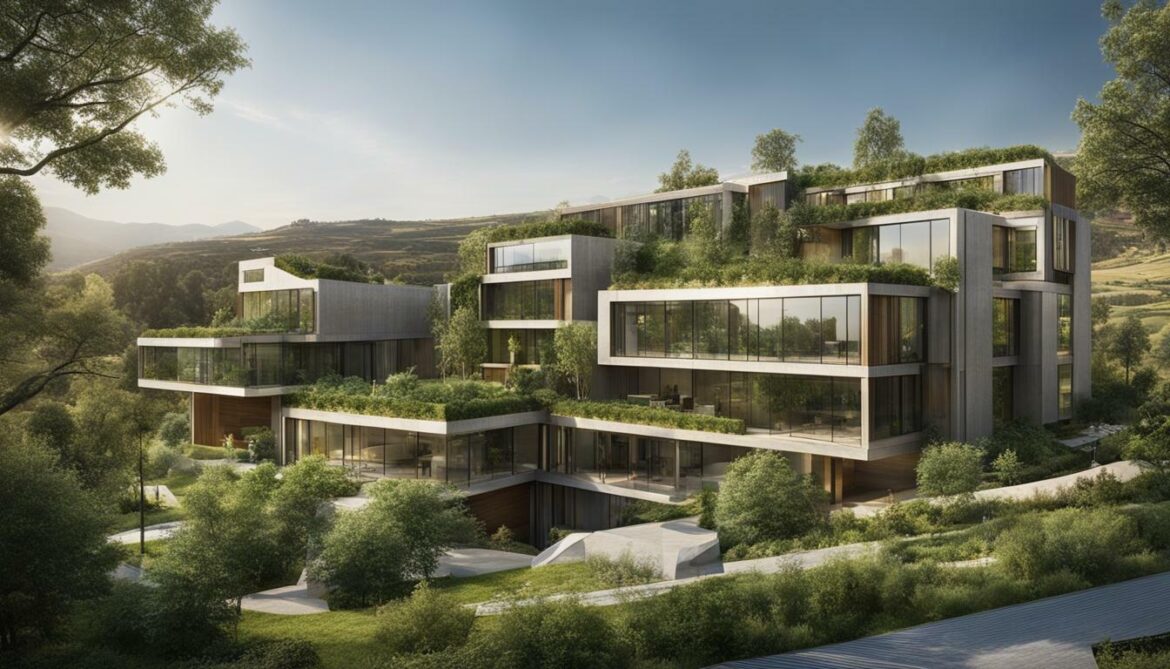
The growing number of green buildings in Azerbaijan is a clear indication that sustainable development and eco-friendly construction practices are becoming increasingly important. By adopting green building practices, Azerbaijan is not only contributing to global efforts to reduce carbon emissions and mitigate climate change but also creating healthier and more livable cities for its citizens.
Government Initiatives and Policies
Azerbaijan’s commitment to green building is further reinforced by the government’s initiatives and policies, which aim to improve energy efficiency in the construction sector and promote the use of renewable energy sources. In 2017, the government launched the National Strategy for Sustainable Development, which outlines the country’s goals and targets for achieving sustainable development in various sectors, including construction and energy.
One of the key initiatives undertaken by the government is the promotion of eco-friendly construction practices through the implementation of building codes and regulations. The State Agency for Alternative and Renewable Energy Sources (SAARES) has been established to oversee the implementation of energy efficiency measures and the use of renewable energy sources in buildings.
The government has also introduced incentives and subsidies to encourage developers and homeowners to adopt sustainable building practices. These incentives include tax breaks and rebates for the installation of energy-efficient systems and the use of renewable energy sources.
Another significant policy introduced by the government is the Green Mortgage Program, which provides low-interest loans to homeowners and developers who build or renovate energy-efficient buildings. This program aims to promote sustainable development in the housing sector and reduce carbon emissions from buildings.
The government has also launched the National Action Plan for the Implementation of the Paris Agreement on Climate Change, which outlines the country’s targets for reducing greenhouse gas emissions and adapting to the impacts of climate change. This plan emphasizes the importance of sustainable development and the use of renewable energy sources in achieving these targets.
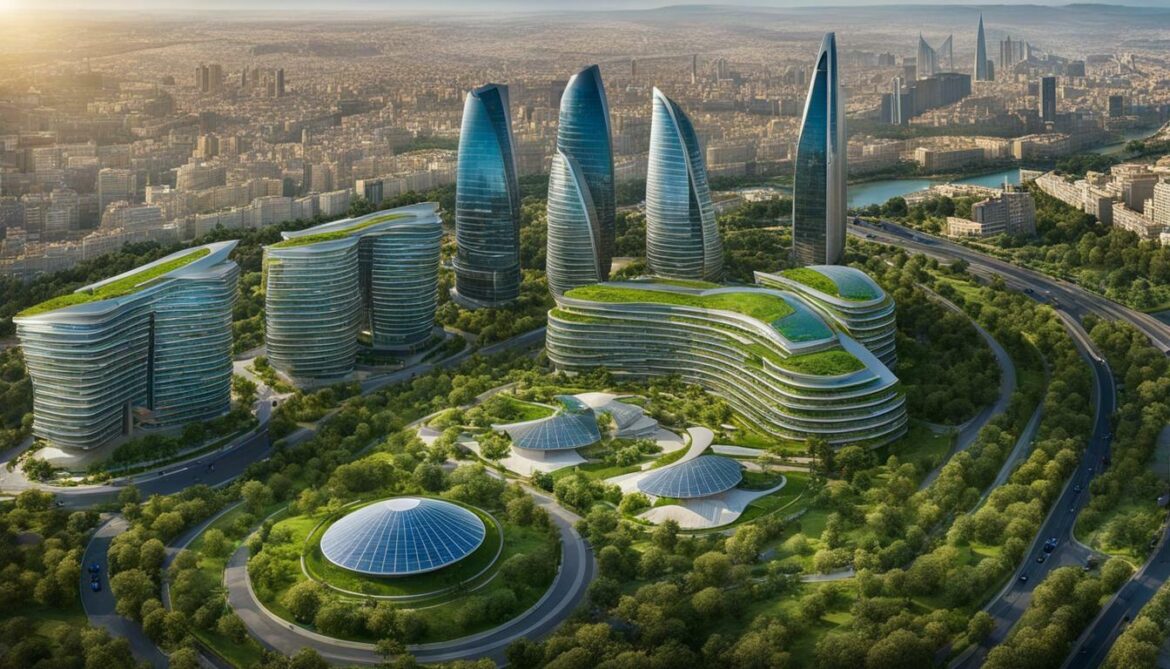
Overall, the government’s initiatives and policies demonstrate its commitment to promoting sustainable development and eco-friendly construction practices in Azerbaijan. As the country continues to grow and develop, these measures will play a crucial role in shaping a sustainable future for Azerbaijan.
The Future of Green Building in Azerbaijan
Looking ahead, the future of green building in Azerbaijan looks promising, with continued efforts expected to drive further adoption of sustainable construction practices and promote sustainable development in the country.
One notable project is the Green City development in Baku. This innovative project aims to create a sustainable and eco-friendly community, incorporating green spaces, renewable energy sources, and energy-efficient buildings. The Green City development reflects the country’s commitment to green building and showcases Azerbaijan’s potential in this area.
In addition to the Green City development, Azerbaijan’s government has implemented several initiatives to promote green building practices. These include the introduction of energy efficiency standards for buildings, as well as incentives for developers to incorporate sustainable features into their projects. These initiatives are aimed at both reducing the environmental impact of buildings and improving energy efficiency.
Furthermore, Azerbaijan is also looking to integrate renewable energy sources into its green buildings. The country has abundant renewable energy resources, including wind and solar power, which can be harnessed to provide clean and sustainable energy for buildings. This transition towards renewable energy sources will further enhance the sustainability of green buildings in Azerbaijan.
The future of green building in Azerbaijan also involves the training and education of professionals in the construction industry. To support this, Azerbaijan has established educational programs and initiatives to raise awareness about green building practices and provide training for architects, engineers, and construction workers. By investing in the development of skilled professionals, Azerbaijan aims to create a sustainable workforce capable of implementing and maintaining green building practices.
Overall, the future of green building in Azerbaijan looks promising, with ongoing projects, government initiatives, and a focus on renewable energy sources. By embracing sustainable practices, Azerbaijan is not only working towards a greener future but also creating healthier and more efficient buildings for its citizens.
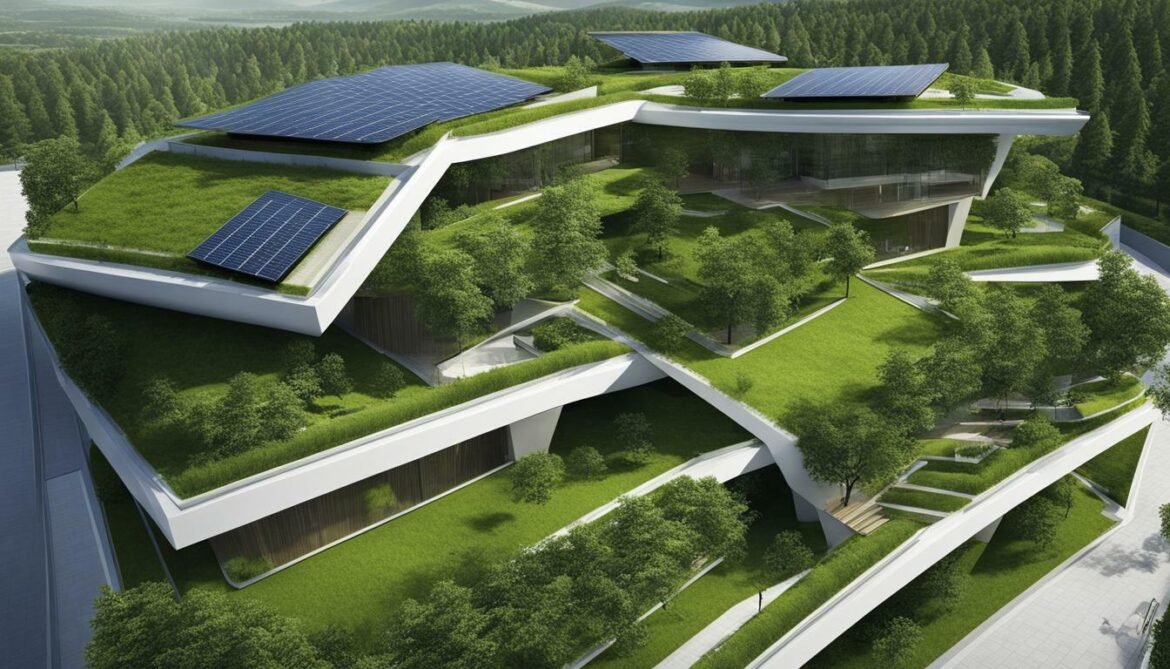
The Conclusion
In conclusion, the history of green building in Azerbaijan can be traced back to the early 2000s when the country started to prioritize sustainable construction. The establishment of the Azerbaijan Green Building Council (AGBC) in 2009 played a vital role in promoting green building practices, raising awareness about sustainable development, and showcasing sustainable design projects such as the Baku White City project.
Furthermore, the government’s commitment to green building initiatives and policies has led to an increasing number of certified green buildings in Azerbaijan, as recognised by international green building rating systems such as LEED and BREEAM. This has contributed to the growth of eco-friendly and sustainable architecture in the country.
Looking towards the future, it is promising to see the growing awareness and interest among architects, engineers, and developers in adopting green building practices and promoting sustainable development. With the continued support of the AGBC, government, and stakeholders in the industry, we can expect to see further progress and innovation in the field of green building in Azerbaijan.
Final Thoughts
In summary, the importance of green building practices in Azerbaijan cannot be overstated. With the country’s rapidly growing population and urbanisation, it is crucial to prioritise sustainable development and eco-friendly construction practices to ensure a healthy and prosperous future for all. It is essential to continue to promote awareness and education about green building, to encourage the adoption of sustainable practices, and to recognise and reward those who make a positive impact on the environment through their building designs and practices.
Finally, it is recommended that further research be conducted on the impact of green building on the country’s economy, environment, and society, in order to fully understand the extent of its benefits and to continue to improve and implement sustainable practices in the industry.
FAQ
Q: What is green building?
A: Green building, also known as sustainable or eco-friendly construction, aims to minimize the negative environmental impacts of the built environment while enhancing the health and well-being of the occupants.
Q: When did green building start in Azerbaijan?
A: The history of green building in Azerbaijan can be traced back to the early 2000s when the country started to focus on sustainable construction.
Q: What is the Azerbaijan Green Building Council (AGBC)?
A: The Azerbaijan Green Building Council (AGBC) is a non-profit organization established in 2009. It aims to promote sustainable building practices and raise awareness about the benefits of green construction in the country.
Q: Can you provide an example of green building in Azerbaijan?
A: One of the earliest examples of green building in Azerbaijan is the Baku White City project. It incorporates various sustainable design features, such as energy-efficient buildings, green spaces, and pedestrian-friendly streets.
Q: Are there any certifications for green buildings in Azerbaijan?
A: Yes, many commercial and residential projects in Azerbaijan have achieved certifications under international green building rating systems, such as LEED and BREEAM. These certifications acknowledge the environmental performance and sustainable design features of the buildings.
Q: What initiatives and policies has the government implemented to promote green building?
A: The government of Azerbaijan has introduced various initiatives and policies, including the State Program on Sustainable Development for 2012-2020. It includes targets for improving energy efficiency in the construction sector and promoting the use of renewable energy sources. The government also offers financial incentives, such as tax breaks and subsidies, to encourage developers to incorporate green building practices.
Q: What does the future of green building look like in Azerbaijan?
A: The future of green building in Azerbaijan looks promising. The government’s commitment to sustainability, combined with the growing awareness among architects, engineers, and developers, is likely to drive further adoption of green building practices and the promotion of sustainable development in the country.



